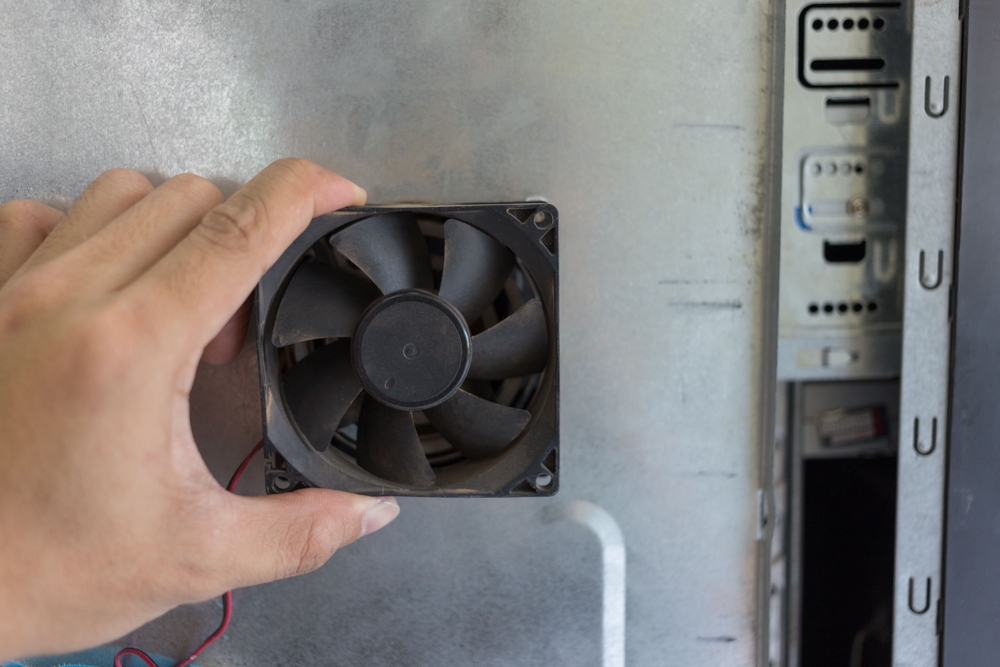
Desktop,Computer,Fan
In the modern world of enterprise computing and data-intensive workflows, storage solutions are more important than ever. As digital transformation accelerates, the need for scalable, high-performance, and cost-effective storage becomes critical. One of the most reliable and widely recognized storage solutions in the IT hardware industry is Dell’s PowerVault.
PowerVault is a line of storage products developed by Dell Technologies, engineered for businesses seeking efficient data storage, data protection, and backup capabilities. Whether it’s file storage, virtualization support, or shared storage in SAN (Storage Area Network) environments, PowerVault has established itself as a versatile and robust component of enterprise-level computer hardware infrastructures.
The Evolution of PowerVault Storage Systems
Historical Overview
Initially introduced in the early 2000s, PowerVault was designed to complement Dell’s growing range of servers and network solutions. As data needs expanded across industries, so did the PowerVault series, offering greater storage capacities, faster performance, and broader compatibility with enterprise applications.
From Direct-Attached Storage to SAN/NAS Integration
The earliest PowerVault models focused on Direct-Attached Storage (DAS), serving as an extension for Dell servers. Over time, PowerVault evolved to support SAN (Storage Area Network) and NAS (Network Attached Storage) functionalities, allowing multiple servers to access centralized storage—boosting flexibility and performance across IT environments.
Key Features of PowerVault in IT Hardware Systems
Scalability
A critical requirement for modern IT hardware is the ability to scale. PowerVault systems offer modular expansion options that allow businesses to start small and expand as needed, often without disrupting ongoing operations. This makes it ideal for both SMBs and large enterprises.
Redundancy and Reliability
PowerVault includes built-in RAID configurations, hot-swappable drives, redundant power supplies, and advanced cooling mechanisms. These features ensure high availability, which is vital for computer hardware running mission-critical applications.
High-Speed Data Transfer
Whether it’s SAS, iSCSI, or Fibre Channel connectivity, PowerVault supports high-speed data transmission protocols that cater to performance-sensitive environments like database servers, virtualization, and cloud gateways.
Integration with Backup Solutions
Dell’s PowerVault is compatible with leading backup software and supports features like snapshots, replication, and data deduplication. These functionalities contribute to seamless data protection in enterprise IT hardware ecosystems.
Types of PowerVault Systems
PowerVault ME Series (Modular Entry)
The ME series is designed for entry-level deployments. It supports a mix of SSDs and HDDs and delivers impressive performance with dual controllers, automated tiering, and remote management capabilities.
PowerVault MD Series (Modular Disk)
The MD series is suitable for larger organizations needing more extensive capacity and performance. These systems support expansion enclosures and are ideal for virtualization and big data workloads.
PowerVault TL Series (Tape Library)
For long-term archival and backup, the TL Series offers robust tape storage. Despite the growth of cloud backup, tape storage remains a cost-effective and secure option for long-term data retention.
PowerVault and Its Role in Data Management
Virtualization Support
Virtualized environments, such as those using VMware or Microsoft Hyper-V, demand storage solutions that can handle high IOPS (Input/Output Operations Per Second). PowerVault systems are designed to provide the performance and reliability necessary to keep virtual machines running smoothly.
File and Block-Level Storage
PowerVault systems support both file-level (NAS) and block-level (SAN) storage. This versatility allows businesses to tailor their computer hardware infrastructure to meet specific application demands.
Disaster Recovery
Backup and disaster recovery are major concerns for any IT hardware manager. PowerVault’s ability to integrate with cloud backup solutions and third-party disaster recovery tools makes it a preferred choice for organizations that prioritize business continuity.
PowerVault in Different Industry Applications
Healthcare
Healthcare providers need reliable and secure data storage for electronic health records (EHRs), imaging data, and more. PowerVault’s security features, scalability, and compliance options (like HIPAA readiness) make it ideal for this sector.
Finance
The financial industry relies on IT hardware with secure and fast storage for transaction processing, compliance records, and customer data. PowerVault delivers the performance and data integrity these applications demand.
Education
Educational institutions use PowerVault for file sharing, research data storage, and virtual learning environments. Its low cost and high scalability provide excellent value for schools, colleges, and universities.
Advantages of PowerVault in Enterprise Hardware Solutions
Ease of Deployment and Management
With intuitive management software like Dell OpenManage and web-based GUIs, PowerVault devices are easy to configure and monitor, even for teams with limited storage expertise.
Cost Efficiency
Compared to other enterprise storage solutions, PowerVault delivers excellent price-to-performance ratios. Its modular approach also ensures businesses only pay for the capacity and features they need.
Energy Efficiency
PowerVault storage arrays are built to minimize energy consumption with intelligent cooling and efficient power supplies. This makes them an environmentally friendly choice within computer hardware infrastructures.
Integration of PowerVault with IT Ecosystems
Compatibility with Dell EMC Servers
PowerVault is designed to seamlessly integrate with Dell EMC PowerEdge servers, creating a highly synchronized IT environment where servers and storage communicate efficiently.
Third-Party Software and Platform Support
Whether you’re running Linux, Windows Server, or VMware, PowerVault supports major operating systems and software platforms. It’s also compatible with various backup applications such as Veeam, Acronis, and Commvault.
Cloud Integration
While primarily an on-premise solution, PowerVault can be used in hybrid environments. It integrates with cloud gateways for off-site backups, cloud archival, and data replication—giving IT managers flexibility in data management.
Common Configurations and Deployment Models
Small Business Server Storage
For small offices, a PowerVault ME4012 configured with hybrid drives can offer excellent storage at a lower cost, providing performance and redundancy in a compact form factor.
Data Center Archival Storage
In a large data center environment, a PowerVault TL2000 tape library can be paired with disk-based PowerVault units for tiered storage solutions. This helps optimize storage cost-efficiency over long durations.
Virtual Machine Storage Cluster
PowerVault MD3860i or ME5024 systems configured with SSDs are often deployed to handle the intense IOPS requirements of virtualized infrastructure clusters.
PowerVault Security and Compliance Features
Data Encryption
Modern PowerVault systems support both at-rest encryption and encryption during transmission to ensure sensitive data remains protected from unauthorized access.
Access Controls
Role-based access and Active Directory integration enable IT administrators to manage who can access what, a key factor in regulated industries.
Compliance and Certifications
PowerVault systems comply with industry standards such as HIPAA, GDPR, ISO/IEC 27001, and others, ensuring they are suitable for sectors that require rigorous data handling policies.
Maintenance and Support for PowerVault Systems
Dell ProSupport
Dell’s comprehensive ProSupport options provide 24/7 access to hardware and software support, automated issue detection, and next-business-day onsite service.
Firmware Updates and Diagnostics
PowerVault units come with tools for remote diagnostics, firmware updating, and performance monitoring—key components for maintaining IT hardware at peak condition.
Best Practices for Using PowerVault in IT Infrastructure
-
Align Storage with Application Needs: Match PowerVault configurations to your workload—SSDs for speed, HDDs for capacity, and tapes for archiving.
-
Use RAID Appropriately: Choose the right RAID level (RAID 5, 6, 10) depending on redundancy and performance needs.
-
Implement Backup Policies: Schedule automated backups and test restore procedures regularly.
-
Monitor Storage Health: Use Dell’s tools for real-time analytics and predictive maintenance.
-
Plan for Scalability: Choose models that allow for future expansion.
PowerVault vs. Other Storage Solutions
| Feature | PowerVault | Competitors (e.g., HPE MSA, NetApp) |
|---|---|---|
| Cost | Competitive | Generally higher |
| Ease of Use | User-friendly GUI | Varies |
| Dell Server Integration | Seamless | Not optimized |
| Virtualization Support | High | High |
| Cloud Integration | Supported | Supported |
PowerVault holds its own against industry giants, especially when price-performance and Dell ecosystem integration are top priorities.
Future Outlook for PowerVault Storage Systems
NVMe and Flash Technologies
PowerVault is already embracing NVMe SSDs and flash storage to offer higher throughput and lower latency, making it a future-ready component of computer hardware storage architecture.
AI-Driven Storage Optimization
AI and machine learning algorithms are being integrated into PowerVault systems for predictive failure detection, intelligent tiering, and automated performance tuning.
Edge and IoT Readiness
Smaller, ruggedized versions of PowerVault are being developed for edge computing and IoT environments, where real-time data processing is essential.
Conclusion: Why PowerVault is Vital for IT Hardware Strategy
PowerVault has consistently proven itself as a foundational component in modern IT hardware infrastructures. Its versatility, performance, cost-efficiency, and scalability make it suitable for businesses of all sizes, from startups to global enterprises.
Whether you are managing virtual machines, running business-critical databases, or maintaining a long-term archive, PowerVault provides a storage solution that integrates seamlessly with your computer hardware ecosystem. As data continues to grow in volume and value, storage systems like PowerVault will remain at the forefront of enterprise technology, enabling agility, security, and performance at every level.


